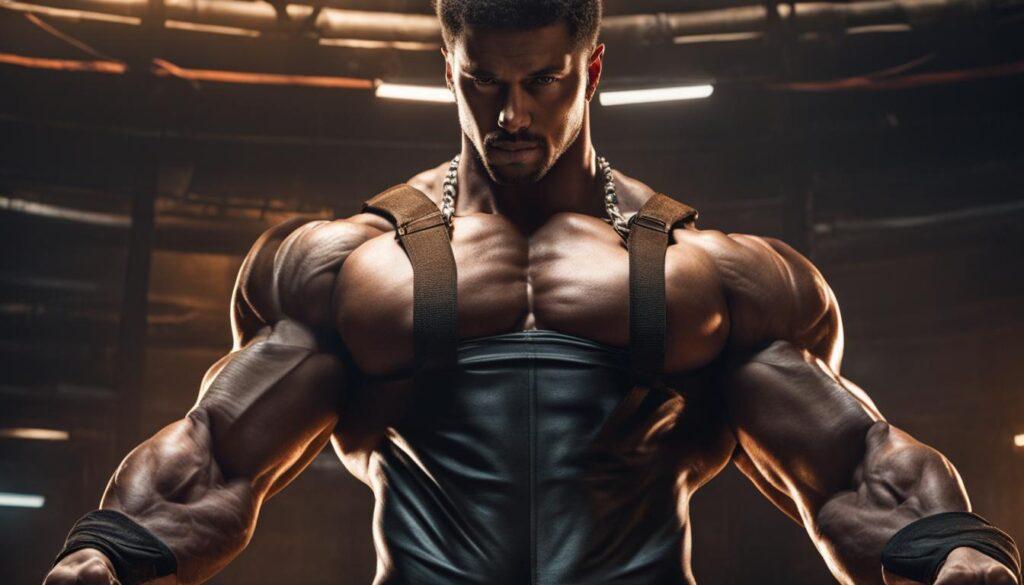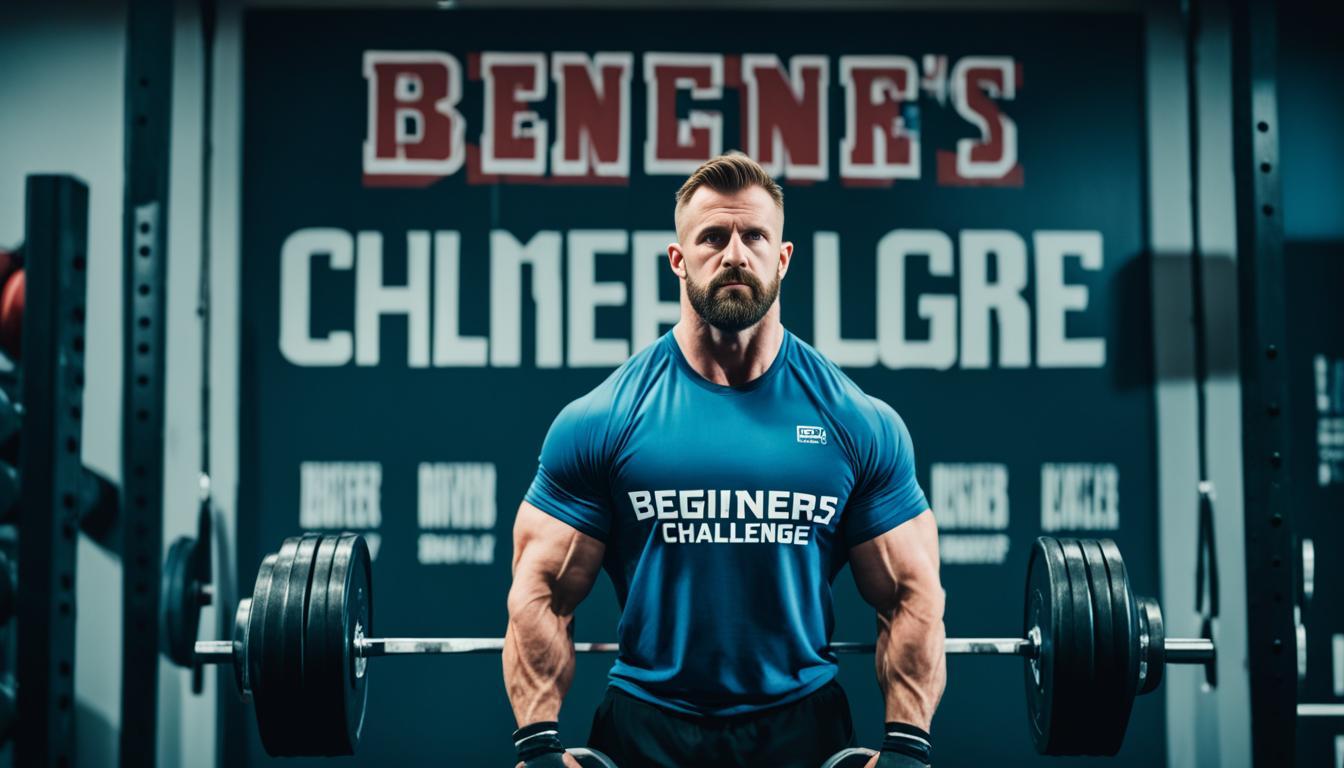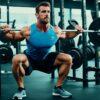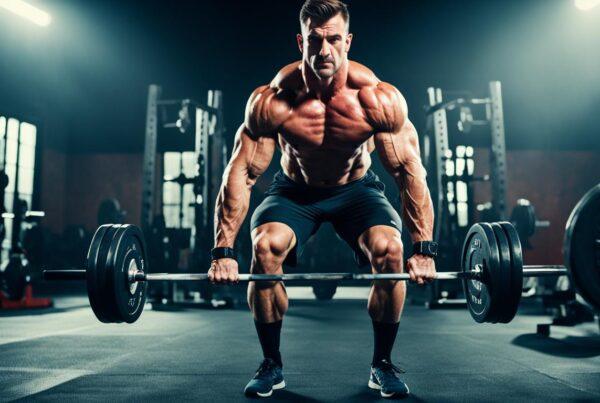Are you looking to redefine the boundaries of your strength and tap into an empowering physical journey? Welcome to the world of powerlifting, where the simplicity of lifting transcends into an art of discipline and power. Powerlifting basics aren’t just for those with bulging muscles or years of gym experience; it’s a sport that invites you to start where you are and progress with purpose. With this beginner’s guide to powerlifting, you’ll learn not only how to get started in powerlifting but also how to steadily unlock a reservoir of strength you didn’t know you had.
Let’s demystify strength training – put aside the notion that it’s synonymous with intimidating heavy weights and unreachable goals. True strength starts with consistent foundations. Whether you’re lifting a barbell for the first time or transitioning from another fitness discipline, unleashing your strength with powerlifting is about embracing progress, proper technique, and the athlete within you. Let this be your first uplifting step into a community that values the weight lifted by the spirit as much as the weight on the bar.
Key Takeaways
- Explore the essentials of powerlifting basics tailored for beginners.
- Understand the importance of proper form and technique in your strength training regimen.
- Learn strategic approaches to getting started in powerlifting, ensuring a safe and effective journey.
- Discern the vital steps to progressively unleash your strength with powerlifting.
- Realize the inclusive nature of powerlifting—suitable for diverse fitness levels and goals.
Understanding Powerlifting: Beginner’s Guide to Powerlifting
When you question what is powerlifting, you’re delving into a sport that celebrates the epitome of strength through three foundational exercises. Unlike its counterpart, Olympic lifting, powerlifting zeroes in on raw power executed in a single move. It’s not just about lifting weights—it’s a measure of personal accomplishment and a core for building incredible overall body strength.
Defining Powerlifting
Imagine powerlifting as the ultimate test of brute force—it’s you against the iron. In this strength sport, precision and controlled exertion are just as critical as the weights you lift. Powerlifting consists of three main events: the squat, bench press, and deadlift, each requiring meticulous squat technique, bench press technique, and deadlift technique.
| Core Lift | Description | Benefits |
|---|---|---|
| Squat | Lowering down into a seated position and rising back up with weight across the back. | Builds leg and core strength, improves lower body mobility. |
| Bench Press | Pressing weight upwards from a lying position. | Increases upper body strength, particularly in chest, arms, and shoulders. |
| Deadlift | Lifting the weight from the ground to hip level and then lowering it back down. | Engages the entire posterior chain, enhancing grip strength and back muscle development. |
The Three Core Lifts: Squat, Bench Press, Deadlift
These lifts are not mere exercises; they are the core lifts of powerlifting, each contributing substantially to muscle mass and strength. Mastering their technique is crucial. In the squat, maintaining a straight back, and driving through the heels personifies proper form. The bench press is about control, keeping the feet planted, and engaging the core. Deadlifts require keeping the bar close to the body, preventing strain by employing a solid grip and a neutral spine.
Powerlifting vs. Olympic Lifting
If you’ve pondered the differences between powerlifting versus Olympic lifting, think of it as a comparison between force and finesse. Olympic lifting consists of dynamic movements—the clean and jerk, and the snatch—requiring explosive power and agility. Powerlifting stands on the opposite side of this spectrum, emphasizing maximum weight over one complete, powerful motion. While both disciplines can complement each other, they cater to diverse aspects of strength and technique.
The Basics of Powerlifting: Beginner’s Guide to Powerlifting
If you’re setting out on a journey in powerlifting fundamentals, know that developing a strength training foundation is critical — it protects against injury and sets the tone for your progress. Before delving into heavy weights, starting powerlifting equates to learning the language of your own body through movements that echo the classic powerlifting exercises.
Mike Farr, a seasoned name in the world of strength, regularly emphasizes the importance of precision in form over the pursuit of the poundages. For those at the genesis of their beginner powerlifting program, it’s about incremental and sustainable advances known as progressive overload.
Here’s a roadmap to getting started:
- Initiate your journey with bodyweight squats and pushups, advancing to the use of an empty barbell only when you’ve mastered the motion.
- Commit to training consistently, adding small weights each session as your comfort with the squat, bench press, and deadlift grows.
- Respect the process, giving precedence to your technique over the temptation of swiftly scaling up the weights.
- Remember, it’s a marathon, not a sprint. Small, calculative increases in weight will ultimately lead to substantial gains.
Cultivating a robust foundation in powerlifting is not about the immediate heft — it’s about building the prowess to lift astronomically, eventually.
Beginner tip: Chart your progress, ensuring careful notes on technique and weight increments, to help maintain accountability and celebrate successes.
As you embark on this exhilarating path, bear in mind that longevity in powerlifting comes from patience and the unwavering commitment to a solid base — this is how strength is truly unleashed.
Powerlifting Techniques: Beginner’s Guide to Powerlifting
As you venture into the world of powerlifting, it’s essential to recognize the significance of flawless technique for maximizing performance and ensuring safety. It’s the precise execution of moves that sets apart novice lifters from seasoned athletes. Let’s delve into the critical aspects of each powerlifting lift and how mastering these can lead to more efficient lifting.
Perfecting the Squat Technique
No powerlifting routine is complete without the squat. With a focus on squat technique, you’ll want to ensure that each repetition achieves full depth for maximum efficacy. This means your hips should sink below parallel with your knees at the bottom of the squat. Remember, proper form not only aids in developing leg strength but also protects your knees and back from injury.
Bench Press for Maximum Efficiency
The bench press technique is critical for developing upper body strength. To harness the full potential of this lift, keep your feet firmly planted, and as you lower the bar towards your chest, make sure to create a stable arch in your back without lifting your glutes off the bench. By doing so, you’ll engage the correct muscles for a powerful lift and efficient powerlifting form.
Deadlift Dynamics: Avoiding Common Mistakes
The deadlift is a true test of overall body strength, but technique is paramount. A good deadlift technique involves maintaining a neutral spine and using your legs to lift the bar in a straight path off the floor. Avoid rounding your back or tug the bar with your arms—these are common mistakes which can lead to injuries. Instead, focus on driving through your heels and keeping the bar close to your body for a safe and effective lift.
 Powerlifting is not just about lifting weights; it’s a meticulous blend of strength, technique, and discipline. By mastering powerlifting lifts, you not only improve your competencies in the sport but also elevate your overall fitness. So as you practice these lifts, keep in mind that each aspect of your technique is a step towards becoming an efficient and accomplished powerlifter. Keep at it, and watch your strength soar!
Powerlifting is not just about lifting weights; it’s a meticulous blend of strength, technique, and discipline. By mastering powerlifting lifts, you not only improve your competencies in the sport but also elevate your overall fitness. So as you practice these lifts, keep in mind that each aspect of your technique is a step towards becoming an efficient and accomplished powerlifter. Keep at it, and watch your strength soar!
Beginner’s Guide to Powerlifting
Embarking on your powerlifting journey is an inspiring decision that’ll forge not just muscles but a stronger character. Understanding the essentials is key to a successful and rewarding experience. Let’s delve into the essentials of powerlifting equipment, the importance of community, and resources to help you get started, including finding a knowledgeable coach to steer you away from injury and towards triumph.
Choosing the Right Powerlifting Equipment
To set the stage for success in powerlifting, investing in the right gear is crucial. Quality powerlifting equipment provides the support and safety needed to perform at your best. Here’s a quick checklist to help ensure you are equipped for success:
- A sturdy weightlifting belt to support your spine during heavy lifts.
- Durable wrist wraps to offer joint stability, especially during bench press and squats.
- Robust powerlifting shoes that provide a solid foundation for all your lifts.

Joining the Powerlifting Community
In the arena of iron, the camaraderie within the powerlifting community is as strong as the weights lifted. Participating in local meets, interacting in online forums, and engaging with local gym groups can prove inspirational. Collaborating with peers and seasoned lifters can also introduce you to various weight classes and help you find where you fit best as you grow in the sport.
Getting Started Resources and Coaching
New to the world of racks and deadlift bars? Getting started resources are plentiful and invaluable. From online tutorials to comprehensive lifting programs, resources tailored for beginners can set a strong foundation. But remember, while guides and videos are helpful, nothing compares to finding a powerlifting coach. A coach doesn’t just correct form; they become your mentor, ensuring injury prevention and helping you navigate the nuances of the sport. When choosing a coach, consider the following:
| Criteria | Benefits | Considerations |
|---|---|---|
| Credentials and Experience | Ensures knowledgeable guidance based on proven success | Look for certifications and verifiable athlete progress |
| Communication Skills | Promotes clear understanding and collaborative goal-setting | Seek a coach who listens and adapts to your learning style |
| Injury Prevention Focus | Keeps you lifting safely and sustainably | Gauge their emphasis on technique and proactive care |
Your coach will be an investment in your powerlifting future. Take the time, do your research, and choose wisely to amplify your chances for optimal results. With the right equipment, community, and coaching, you’ll be set to not just lift weights, but also lift your spirits high with every new milestone achieved.
Creating Your Workout: Beginner’s Guide to Powerlifting
Embarking on a powerlifting journey as a beginner may seem daunting at first, but the key is to develop a solid beginner powerlifting routine that promotes consistent progress. Let’s dive into some essential training tips for powerlifting that will help you lay the groundwork for a successful lifting path.
When it comes to powerlifting workout programs, balance is paramount. Your focus should be on a training regimen that harmonizes workout frequency and intensity while ensuring that volume is not overlooked. Adhering to powerlifting progressive overload principles will aid you in steadily building your strength capacity, so you’re continuously improving without overexertion.
Let’s consider a sample beginner powerlifting routine:
| Day | Exercise | Sets | Reps |
|---|---|---|---|
| Monday | Squat | 3 | 5 |
| Wednesday | Bench Press | 3 | 5 |
| Friday | Deadlift | 3 | 5 |
Experienced coaches like Mike Farr emphasize the importance of not pushing to failure during these early stages. Instead, you should concentrate on flawless execution of each lift, honing your technique, and safeguarding your recovery for the next workout. Remember, it’s not just the weight that counts but also how you lift it.
- Rest days: Vital for recovery and growth, they allow your body to repair and strengthen.
- Deload periods: Intentionally lighter workout weeks that promote long-term progression and prevent burnout.
By incorporating these methods, you’ll ensure that your training is sustainable and productive. Commit to your beginner powerlifting routine, embrace these training tips for powerlifting, and watch as you unlock new levels of strength and resilience.
Competition Preparation: Beginner’s Guide to Powerlifting
Embarking on your powerlifting meet journey requires a clear understanding of the groundwork before you step onto the competition platform. Delving into the nuances of the competition environment is essential to ensure that you’re not only physically but also strategically prepared. Familiarizing yourself with powerlifting federation standards, which set the stage for a fair and organized competition, will set you apart from those less meticulous about the specifics of meet day.
Understanding the Competition Environment
When you immerse yourself in the world of powerlifting meets, you’re entering an arena that celebrates strength, discipline, and precision. The atmosphere is charged with like-minded individuals who respect the rigor of the sport. Your powerlifting meet preparation should include visits to local meets to observe firsthand the procedures, the flow of events, and the conduct expected from each athlete. By absorbing the competition environment beforehand, you equip yourself with the keen insight that goes beyond physical training.
Navigating Powerlifting Meet Rules
Grasping the powerlifting competition rules is imperative as they govern the execution of your lifts and can mark the difference between a successful attempt and a disqualification. Each lift comes with its set of requirements, such as achieving the proper depth in squats or locking out your deadlifts fully. Rules may vary slightly across different federations, so it’s crucial to study the rulebook of the federation hosting your upcoming meet, ensuring that your hard-earned lifts meet every standard on game day.
Weight Classes and How to Choose Yours
Selecting the right weight class is a strategic decision that can impact your performance. Powerlifting is divided into weight classes to promote fairness and organize competitors into divisions of similar body weights. These classes typically ascend in 20-pound increments for men and 10-pound increments for women. Consider your comfort level, nutritional habits, and where your body naturally maintains its strength when choosing your class. Ultimately, it should align with your long-term progression and health goals—key considerations in powerlifting that transcend merely making weight.








